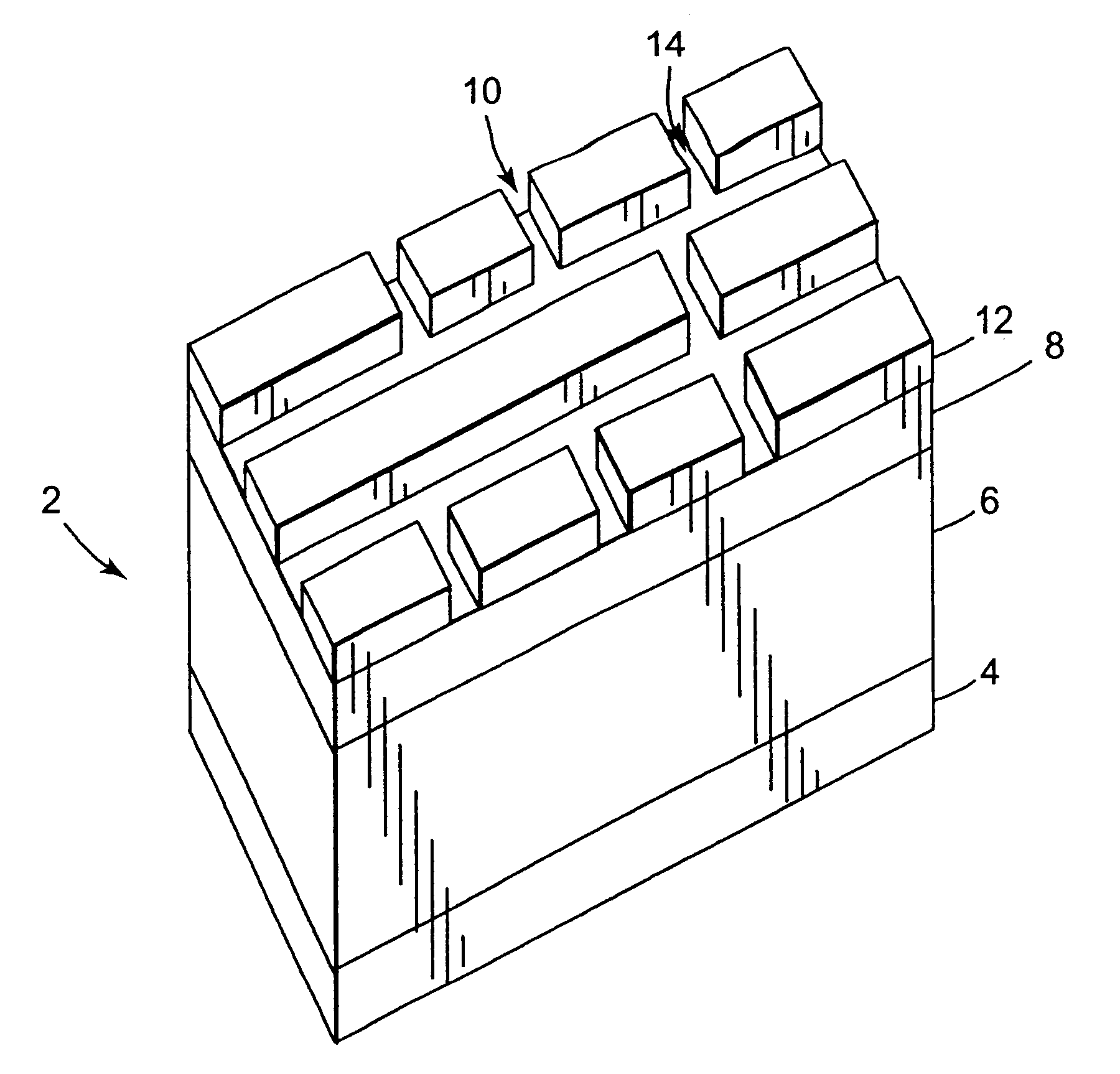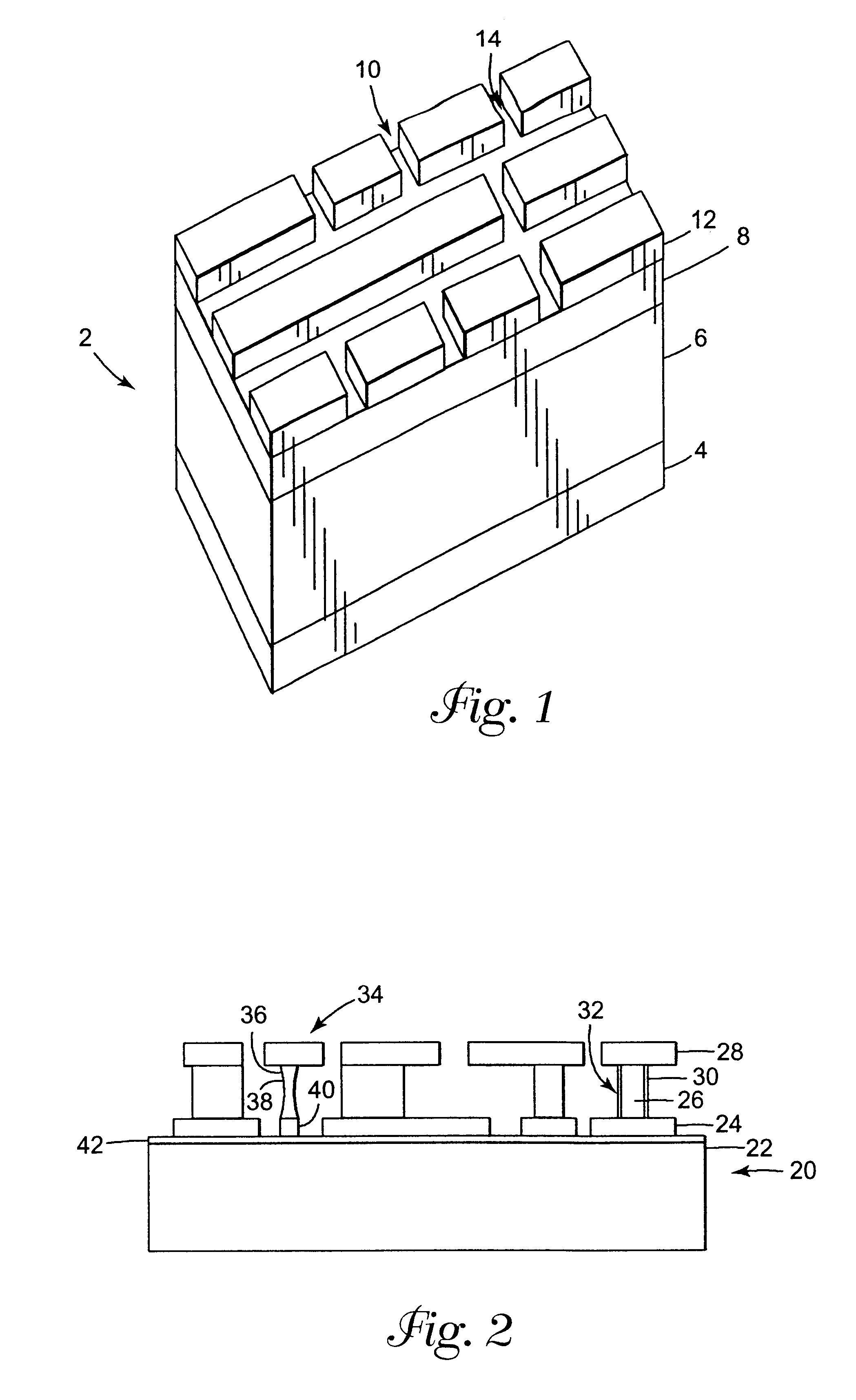Circuit manufacturing using etched tri-metal media
a tri-metal and metal multilayer technology, applied in the direction of printed circuit manufacturing, printed circuit aspects, cable/conductor manufacturing, etc., can solve the problems of insufficient bonding between metal multilayer and semiconductor substrate constituting an electrode pattern, damage to circuitry elements, and improper methods
- Summary
- Abstract
- Description
- Claims
- Application Information
AI Technical Summary
Problems solved by technology
Method used
Image
Examples
Embodiment Construction
The following non-limiting example is provided to give an example of a typical process according to the present invention to support rather than limit the practice of the present invention.
A cleaned and degreased tri-metal subelement comprising 2 mil copper / 6 mil aluminum / 2 mil copper (in a clad system) was coated with a photoresist (a commercial dry-film negative-acting photoresist from Shipley, Dynachem or Morton 5032, 1.3 mil) and the resist was imagewise exposed with ultraviolet radiation (in a pattern of an electronic circuit, including preliminary patterns for at least one air bridge). The exposed resist was developed in sodium carbonate solution removing unexposed resist. A copper etchant comprising cupric chloride was used on the imaged surface, etching the copper down to the aluminum layer. The etch of the copper layer should preferably just barely engage, expose, or approach the aluminum layer when a strong etch solution (such as cupric chloride and oxidizing agent) is use...
PUM
| Property | Measurement | Unit |
|---|---|---|
| elastic elongation | aaaaa | aaaaa |
| thickness | aaaaa | aaaaa |
| thickness | aaaaa | aaaaa |
Abstract
Description
Claims
Application Information
 Login to View More
Login to View More - R&D
- Intellectual Property
- Life Sciences
- Materials
- Tech Scout
- Unparalleled Data Quality
- Higher Quality Content
- 60% Fewer Hallucinations
Browse by: Latest US Patents, China's latest patents, Technical Efficacy Thesaurus, Application Domain, Technology Topic, Popular Technical Reports.
© 2025 PatSnap. All rights reserved.Legal|Privacy policy|Modern Slavery Act Transparency Statement|Sitemap|About US| Contact US: help@patsnap.com



